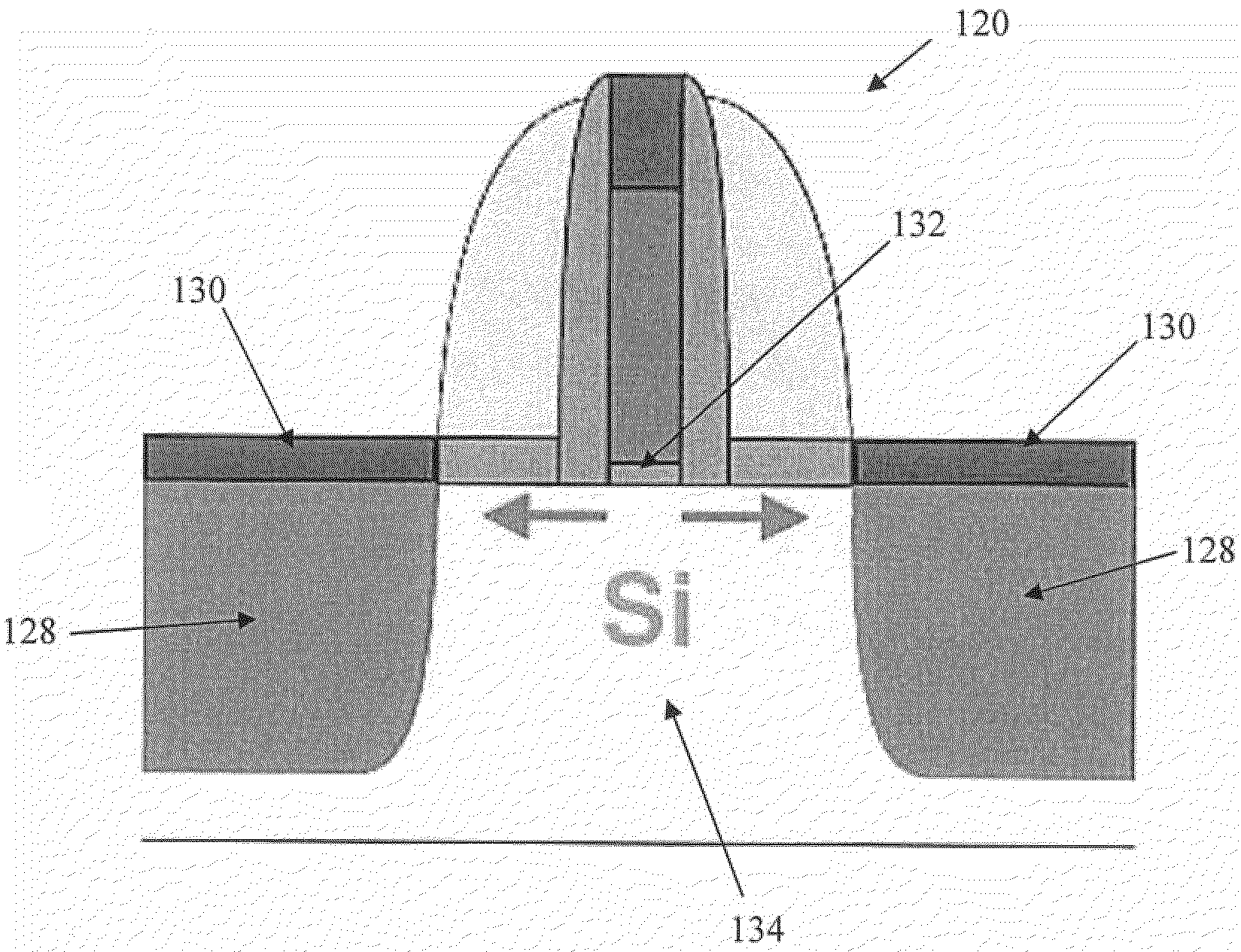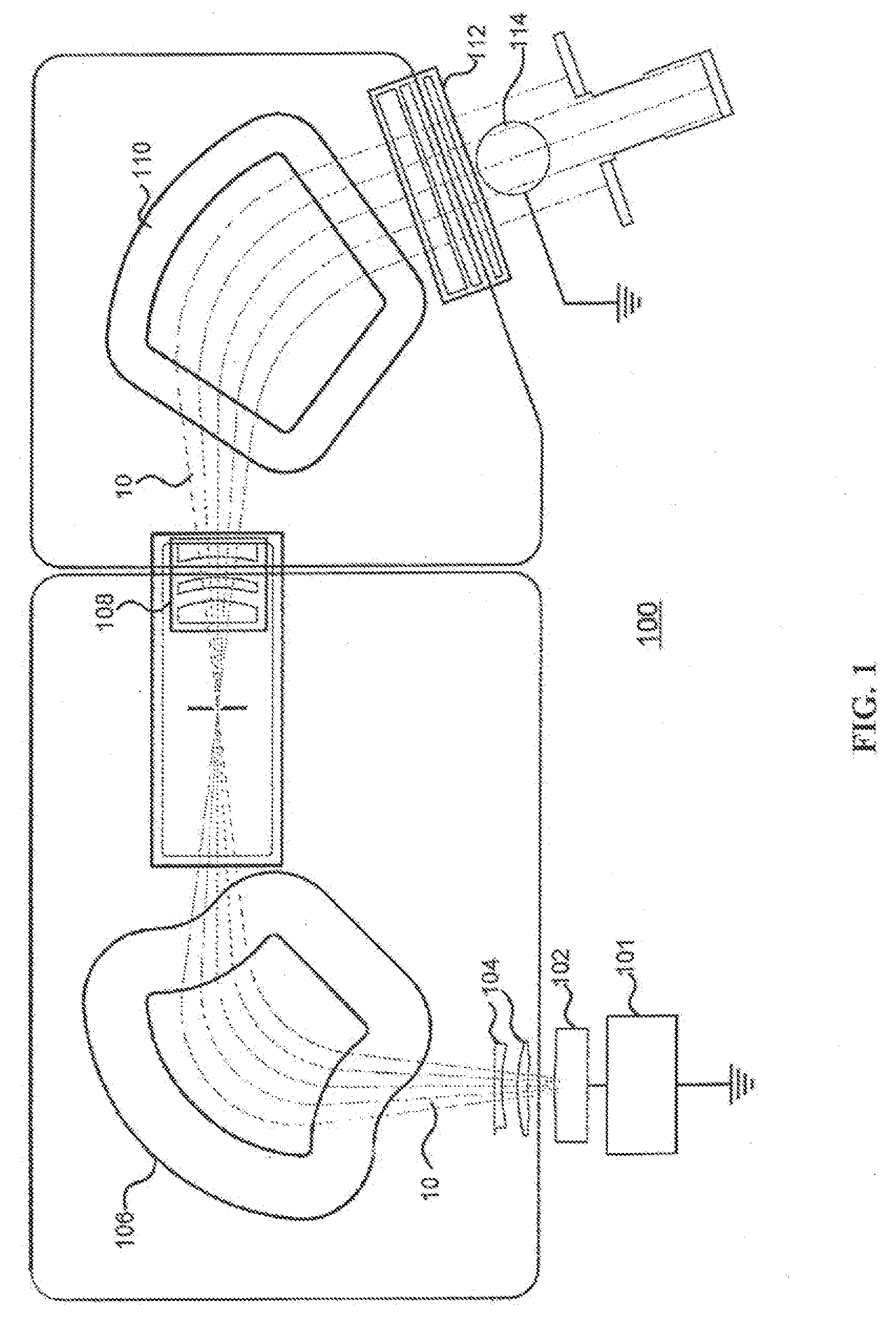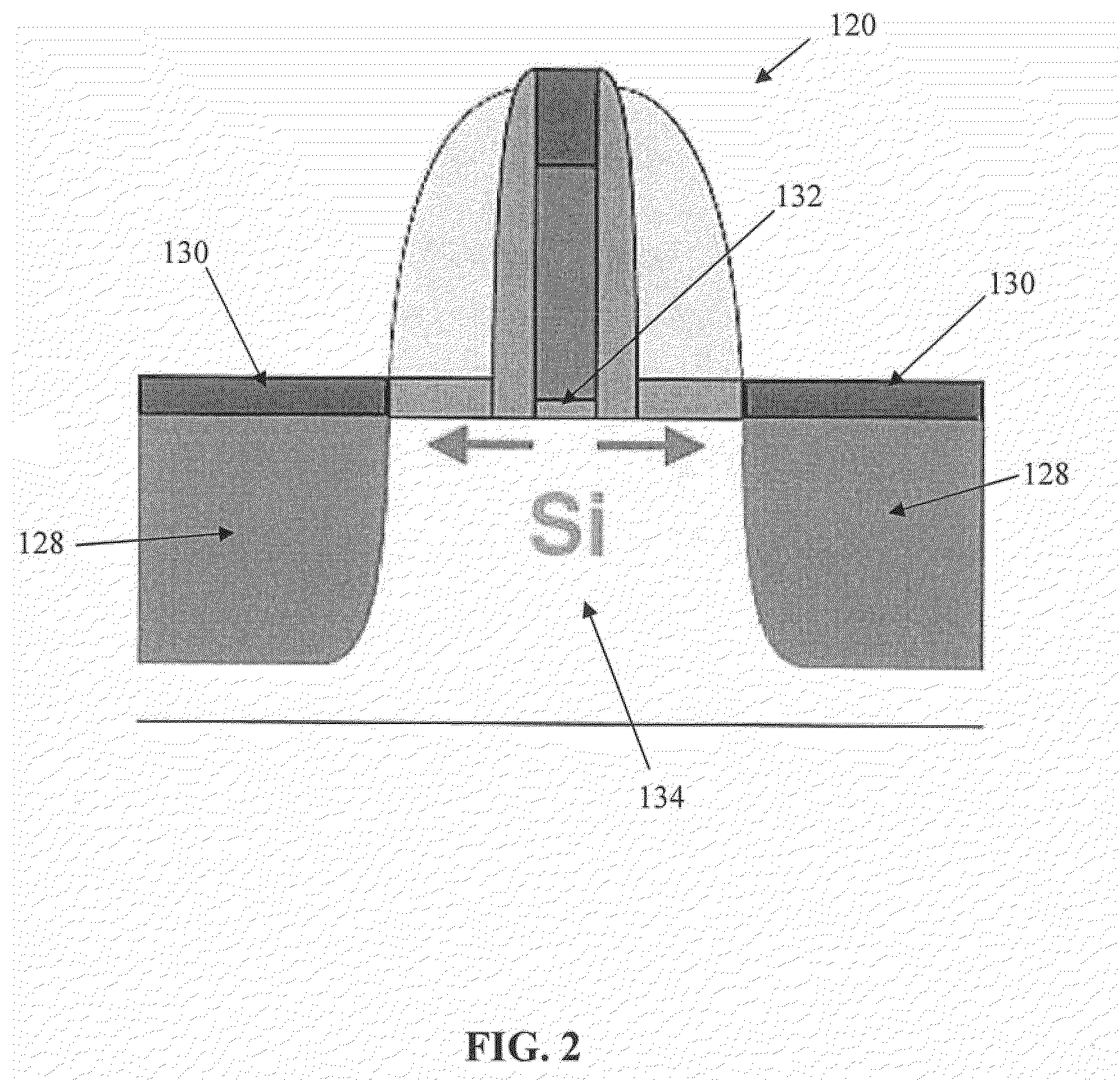Formation Of Raised Source/Drain On A Strained Thin Film Implanted With Cold And/Or Molecular Carbon
a thin film, cold and/or molecular carbon technology, applied in the direction of basic electric elements, electrical equipment, semiconductor devices, etc., can solve the problems of loss of strain caused by source/drain implantation, defects in silicon substrates, and reduced overall yield, so as to enhance stress in the channel region and stress in the source or drain region.
- Summary
- Abstract
- Description
- Claims
- Application Information
AI Technical Summary
Benefits of technology
Problems solved by technology
Method used
Image
Examples
Embodiment Construction
[0017]A technique is disclosed for combating the aforementioned loss of strain problem is to grow a raised Source / Drain (S / D) on top of the Si—C layer. Cold ion implantation of carbon and / or molecular carbon ion implantation enable the creation of an Si—C layer that can then be used as the base for a raised S / D. And since the S / D are raised above the Si—C layer, subsequent implantation of dopant ions (e.g., P, As) in the raised S / D regions has less impact on the strain layer (i.e., the dopant implant will not relax the strain layer) as compared to implants in the C-containing regions. In addition, the use of cold implantation of carbon results in a substrate surface having fewer defects than is found using traditional carbon implantation techniques, thus resulting in a better surface upon which to subsequently grow the raised S / D regions.
[0018]The disclosed technique includes a single or series of carbon ion implants at a reduced temperature and / or using molecular carbon with or wit...
PUM
 Login to View More
Login to View More Abstract
Description
Claims
Application Information
 Login to View More
Login to View More - R&D
- Intellectual Property
- Life Sciences
- Materials
- Tech Scout
- Unparalleled Data Quality
- Higher Quality Content
- 60% Fewer Hallucinations
Browse by: Latest US Patents, China's latest patents, Technical Efficacy Thesaurus, Application Domain, Technology Topic, Popular Technical Reports.
© 2025 PatSnap. All rights reserved.Legal|Privacy policy|Modern Slavery Act Transparency Statement|Sitemap|About US| Contact US: help@patsnap.com



